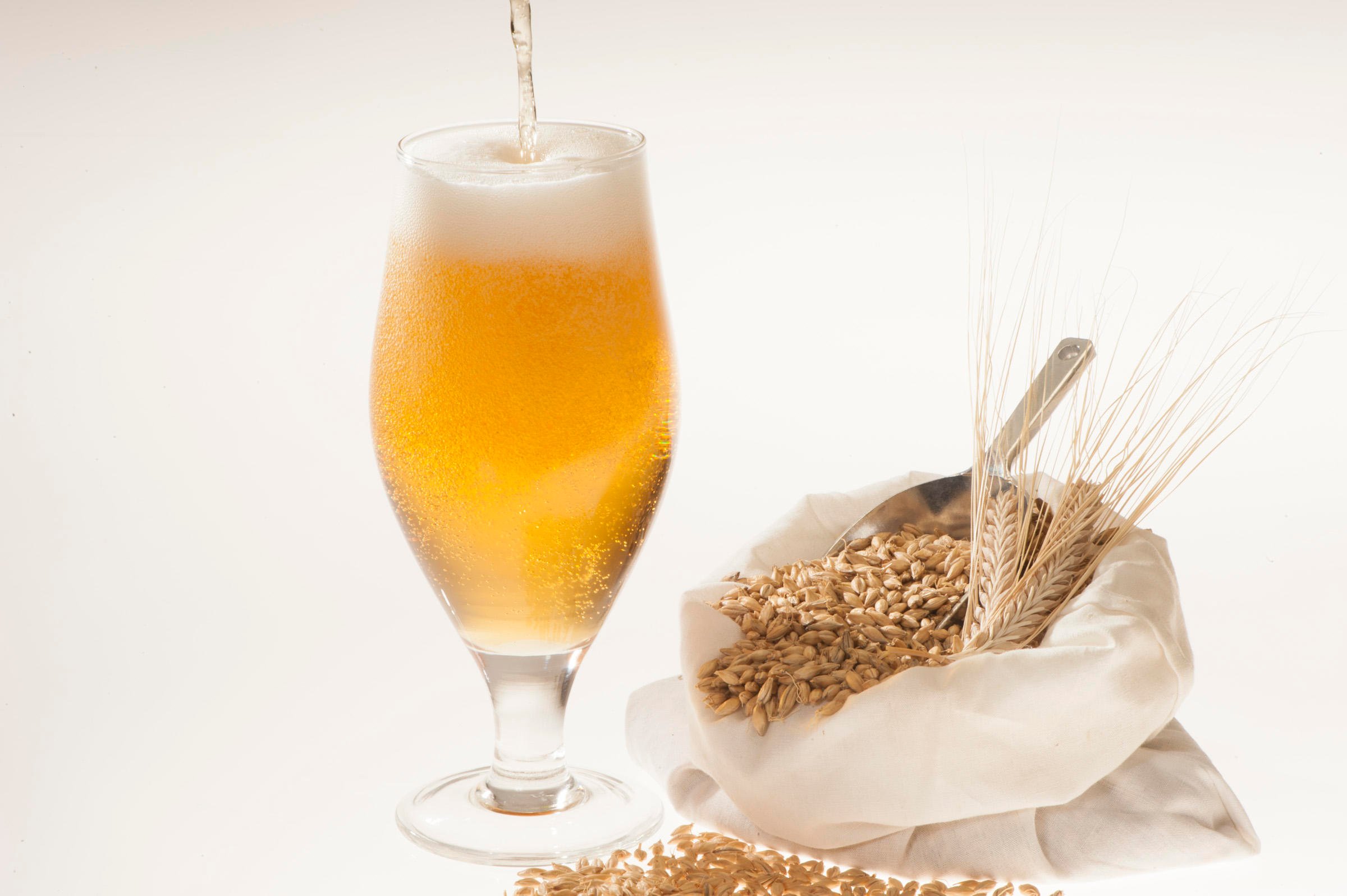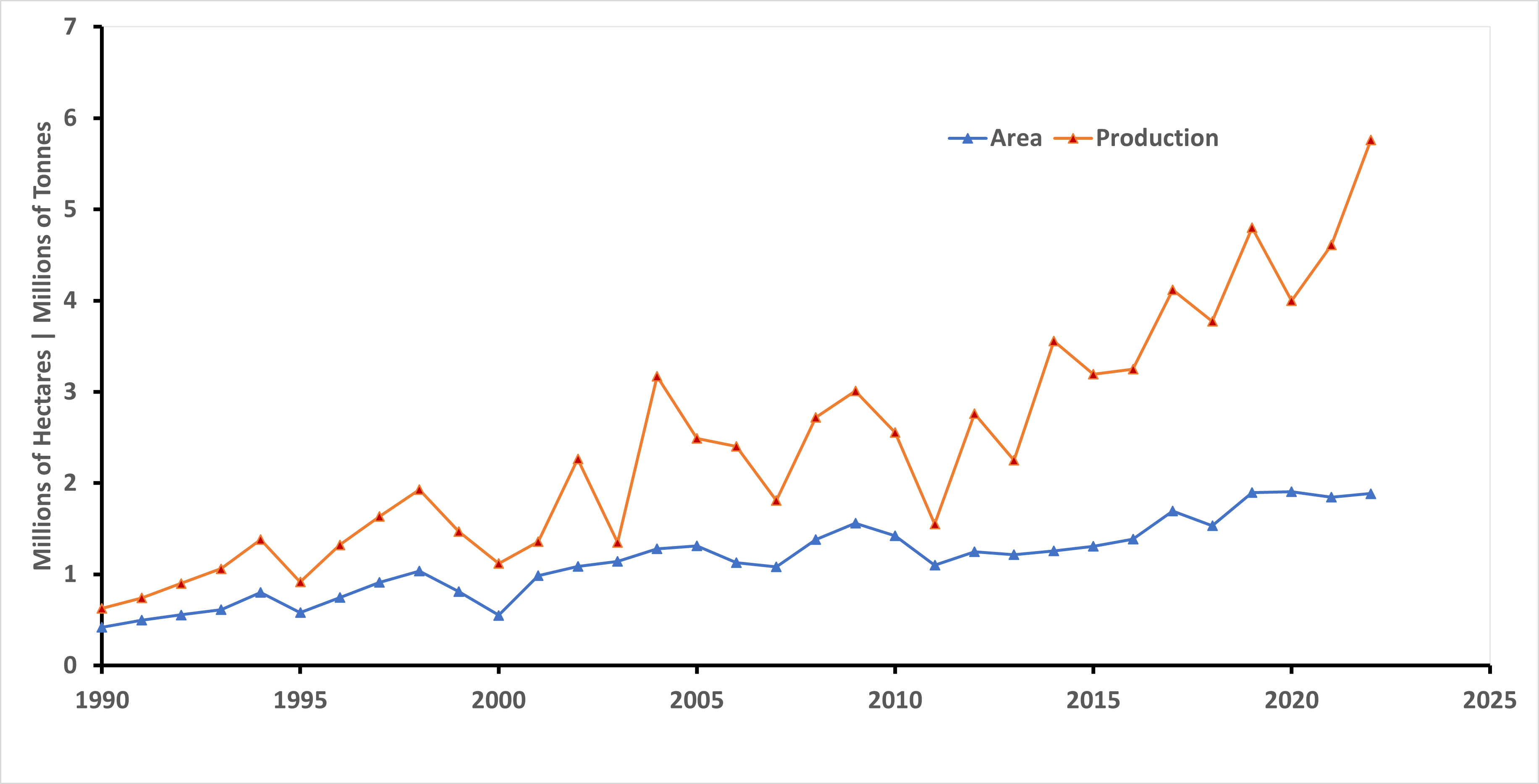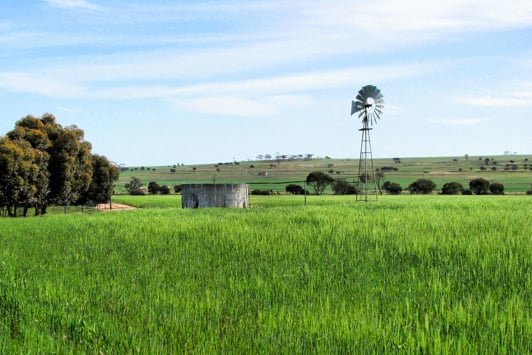The department is involved in all aspects of the barley value chain, from pre-breeding research to supporting the development of new barley varieties to barley agronomy research, development and extension, barley grain quality assessments, and market intelligence work.
Barley produced in Western Australia services diverse markets domestically and internationally, including malt, grain, and animal feed markets. Historically, around one third of barley produced is delivered as malting grade and the remainder as feed grade, and the majority is exported to international customers, particularly into Asia and the Middle East.
Western Australian barley industry
Barley is Western Australia’s second largest crop, after wheat. Barley produced in Western Australia has an export value of over $1 billion per year and services diverse malting and feed grain markets. Most barley produced in Western Australia is exported, predominantly into Asia and the Middle East.
The department is involved in all aspects of the barley value chain, from variety development and assessment to grain quality research, and market intelligence to determine export market needs.

Production
Barley is the second largest broadacre crop (by production volume) in Western Australia after wheat, accounting for around 25% of Western Australia’s annual grain production. Barley is typically grown in rotation with other crops including wheat, oats, canola and pulses. Barley grown in Western Australia is segregated into malting barley or feed barley grades, with receival into malting grades dependent upon Malting Barley Accreditation of the variety and the meeting of specific quality requirements upon harvest.

WA barley area and production 1990-2022
Malting
There are two malting plants in WA: Boortmalt (Joe White Maltings) in Forrestfield, the largest barley malting facility in the southern hemisphere; and United Malt (Barrett Burston Malting) in Welshpool. Around 250,000 tonnes of malting barley is produced between the two plants each year. Although the Western Australian beer industry now comprises over 100 breweries, most of the malt produced in the Western Australian plants is exported to international customers.
Western Australia is also home to Pilot Malting Australia (PMA), located at Edith Cowan University, Joondalup. PMA was established in 2010 and enables the testing of smaller quantities (up to 100 kg batches) of malting barley to produce quality data comparable to commercial malting facilities. The pilot facility speeds up the identification of promising new malting barley varieties and enables the beer quality attributes of WA malting varieties to be demonstrated to export customers. Pilot malting is now utilised for Stage 1 testing under the Grains Australia Malting Barley Accreditation program.
Exports
Barley produced in Western Australia is exported as malting or feed quality grain, or as malt (malted in Western Australia). Historically, around 30% of the barley produced in Western Australia is delivered as malting grade, although the end-use of this grain depends on international demand for malting and feed quality barley and the market it is eventually sold into.
International markets for Western Australian barley include malting and brewing customers and purchasers of feed grade barley for animal feed. Along with international markets, domestic shipping of barley from WA into the eastern states can occur during periods of poor production, such as occurred due to drought in 2018 and 2019.
China is the largest importer of Australian barley. Prior to the introduction of tariffs on Australian barley in 2020, China comprised half to three-quarters of Australia’s annual barley exports. The next largest importer was Japan (around 10-20% of Australia’s annual barley exports). From 2020 to 2023, the major importers of Australian barley included Saudi Arabia and Japan, with malting barley also diversifying into Central and South America. In the short period since the removal of tariffs on Australian barley in 2023, China once again comprises most of Australia’s barley exports.
Quality
Western Australia produces barley that is plump and bright with a moderate protein concentration and low grain moisture. WA malt barley has quality characteristics such as high germination rate with uniform malting characteristics, excellent level of malt extract, and a range of enzyme levels to suit different brewing styles.
Western Australian feed barley is low in mycotoxin contamination, has good nutrition and energy content, and is higher fibre than some other feed grains. It is well suited for animal feed, including beef cattle, dairy cattle, sheep, pigs, and all types of poultry.
Diseases and pests of barley
When selecting a barley variety for your cropping program, it is important to be aware of the variety's disease and pest package to allow for appropriate planning and proactive management to reduce risk of yield losses.
The severity of disease in barley crops depends on the presence of inoculum carried over from last season, favourability of seasonal conditions, pathotype virulence, and varietal susceptibility.
An annual review of your crop’s disease and pest resistance ratings is vital, as risk profiles change with the introduction of new pathotypes.
Refer to the Western Australian crop sowing guide below for leaf disease resistance profiles for barley varieties and crown rot yield loss and virus and nematode seedling and adult resistance profiles for barley varieties when grown in Western Australia.
A rapidly developing issue for the Australian grains industry is development of fungicide resistance in a range of barley pathogens. Using good Integrated Disease Management (IDM) approaches can help reduce reliance on fungicides for disease management. More information on fungicide resistance is available from The Australian Fungicide Resistance Extension Network.
Pest insects and nematodes can have adverse and damaging impacts on agricultural production and market access, the natural environment, and our lifestyle.
Western Australia is free from some of the world's major pest insects. Biosecurity measures on your property are vital in preventing the spread of insect pests.
The department provides:
- biosecurity/quarantine measures at the WA border to prevent the entry of pest insects
- where relevant post border biosecurity measures
- advice on widespread pest insects present in the state
More information
- Barley and cereal yellow dwarf viruses and their management
- Leaf diseases and their management in barley
- Managing barley mildew in the face of fungicide resistance
- Net form net blotch and its management in barley
- Smut and bunt diseases and their management in barley
- Spot form net blotch and its management in barley
Soil-borne pathogens and nematode pests infect plant roots and impact their ability to take up water and nutrients. Environmental factors such as soil moisture, temperature and nutrient availability will determine the severity of disease development. Soil-borne diseases and nematode pests are best managed by identifying the pathogens or pests causing plant decline, using crop and variety rotation, and chemical management, if available.
Nematode pests
Nematodes are microscopic, worm-like animals that feed on plant roots causing damage and yield loss in susceptible crops. Crops infested with plant parasitic nematodes are more susceptible to infection by fungal diseases such as rhizoctonia root rot.
More information
- Armyworm
- Balaustium mite
- Brown wheat mite
- Cereal aphids
- Cockchafer
- Cutworm
- Desiantha weevil
- Lucerne flea
- Pest slugs and snails
- Red legged earth mite (RLEM)
- Russian whear aphid
- Webworm
Crop Sowing Guide
The Western Australian crop sowing guide is a one stop shop for information on all the major crops grown in Western Australia, compiled by the department. This edition includes the major crops grown in WA – wheat, barley, canola, oat, lupins, and pulses. The guide aims to provide information to support growers with decisions on the best choice of variety for each of the major crops for the upcoming season.
View the current Crop Sowing GuideContact us
Related links
- 2024 Western Australian crop sowing guide
- Australian barley - AEGIC
- Australian Exports Grains Innovation Centre (AEGIC)
- Barley production - effects of weather damage
- Blue aleurone and its management in barley
- FlowerPower tool - Predict cereal flowering dates
- Grains Industry Association of Western Australia (GIWA)
- Grains Research and Development Corporation (GRDC)
- GRDC National Variety Trials
- Malt quality parameters for malting barley
- Registered fungicides for broadacre crops
- Subscribe to the Grains Convo Newsletter
- The Australian Fungicide Resistance Extension Network (AFREN)
- Zadoks growth scale

